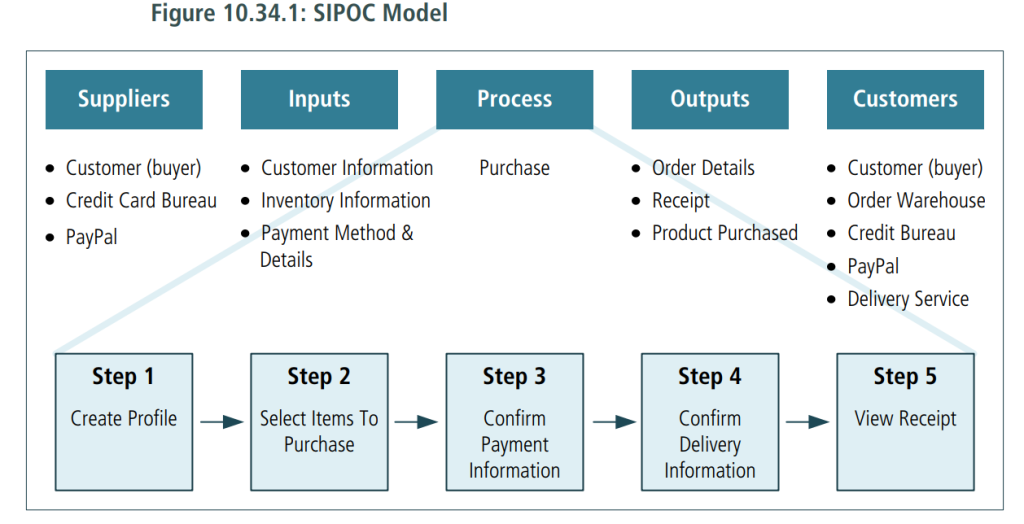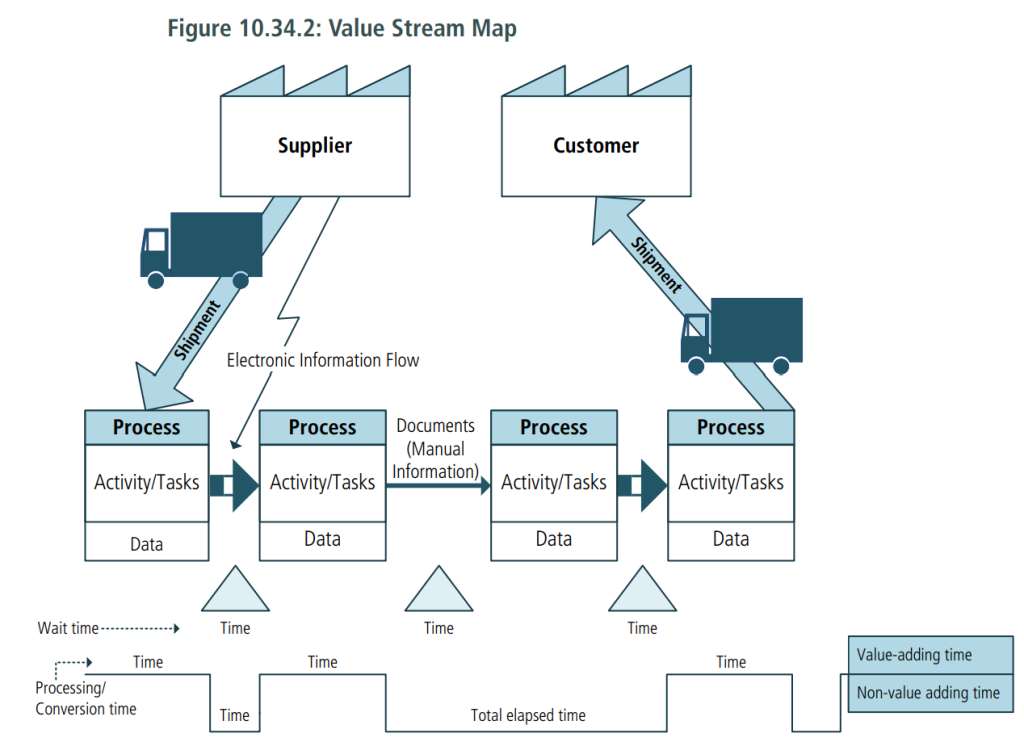10.34.1 Purpose
Process analysis assesses a process for its efficiency and effectiveness, as well as its ability to identify opportunities for change.
10.34.2 Description
Process analysis is used for various purposes including:
- recommending a more efficient or effective process,
- determining the gaps between the current and future state of a process,
- understanding factors to be included in a contract negotiation,
- understanding how data and technology are used in a process, and
- analyzing the impact of a pending change to a process.
A number of frameworks and methodologies exist that focus on process analysis and improvement methods, such as Six Sigma and Lean. Methods for process improvement include value stream mapping, statistical analysis and control, process simulation, benchmarking, and process frameworks.
Common changes made to processes in order to improve them include:
- reducing the time required to complete a task or tasks in the process,
- modifying interfaces or hand-offs between roles and organizational units to remove errors, including the reduction or elimination of bottlenecks,
- automating steps that are more routine or predictable, and
- increasing the degree of automation in the decision making required by the process.
When analyzing a process, business analysts look for:
- how the process adds or creates value for the organization,
- how the process aligns to organizational goals and strategy,
- to what degree the process is and needs to be efficient, effective, repeated, measured, controlled, used, and transparent, and
- how the requirements for a solution cover the future state process and its external stakeholders, including customers.
10.34.3 Elements
.1 Identify Gaps and Areas to Improve
Identifying gaps and areas to improve helps to identify what areas are in scope for analysis. Industry-specific models and process frameworks may be helpful in this regard. When identifying gaps and areas to improve, business analysts:
- identify gaps between the current and desired future state,
- identify what gaps and areas are value and non-value added,
- understand pain points and the challenges of the process from multiple points of view,
- understand opportunities to improve the process from multiple points of view,
- align the gaps and areas to improve with the strategic direction of the organization, and
- understand the relationship of the gaps and areas to improve to changes in the enterprise.
.2 Identify Root Cause
Identifying the root cause of the gaps and improvement areas ensures that the solution addresses the right gap and area.
When identifying the root cause, business analysts understand:
- there may be multiple root causes,
- the inputs leading to the gap or area of improvement,
- who the right people are to identify the root cause, and
- the current measurements and motivators in place for those owning or performing the process.
.3 Generate and Evaluate Options
Generating options and alternative solutions to solve for the gap or area of improvement helps the team evaluate and see different points of view for improving the process. It is important for stakeholders to be involved in identifying the impact, feasibility, and value of the proposed solution relative to alternative options.
.4 Common Methods
SIPOC
SIPOC is a process analysis method that originates in the Six Sigma methodology and has been more commonly adopted as a process analysis method outside of Six Sigma.
It is used to look at the process and understand the Suppliers, Inputs, Process, Outputs and Customers of the process being analyzed.
A SIPOC provides a simple overview of the process. It also shows the complexity of who and what is involved in creating inputs to the process and shows who receives outputs from the process. A SIPOC is a powerful tool used to create dialogue about problems, opportunities, gaps, root cause, and options and alternatives during process analysis.

Value Stream Mapping (VSM)
Value stream mapping (VSM) is a process analysis method used in Lean methodologies.
Value stream mapping involves the diagramming and monitoring of inputs and application points for processing those inputs, starting from the front-end of the supply chain. At each stage, the value stream map gauges the wait time for the inputs and the actual processing times at the application points (also known as conversion times). At the end of the supply chain, the value stream map depicts the logistics or distribution process to the customer.
The value stream map provides a one-page picture of all the steps involved in the end-to-end process, including both value-adding (the value stream) and nonvalue-adding (waste) elements.

10.34.4 Usage Considerations
.1 Strengths
- Ensures solutions address the right issues, minimizing waste.
- Many different techniques and methodologies can be used and provide teams with great flexibility in approach.
.2 Limitations
- Can be time-consuming.
- There are many techniques and methodologies in process analysis. It can be challenging to decipher which to use and how rigorously to follow them, given the scope and purpose.
- May prove ineffective at process improvement in knowledge or decisionintensive processes.
